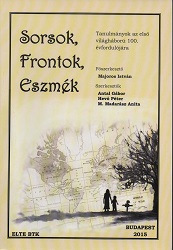Bécs? Prága? Budapest? A szlovák nemzeti mozgalom útkeresései az 1910-es években
Vienna? Prague? Budapest? The Quests of the Slovakian National Movement in 1910s
Author(s): Zsolt Vesztróczy
Subject(s): Cultural history, Ethnohistory, History of ideas, Political history, Social history, 19th Century, Pre-WW I & WW I (1900 -1919)
Published by: Eötvös Loránd Tudományegyetem, Új-és Jelenkori Egyetemes Történeti Tanszék
Keywords: Slovak national movement; Nationality Law; autonomy; Hungarian government; Czech-Slovak cooperation;
Summary/Abstract: In the 1910’s the Slovak national movement had a double political program. The first level of this was the realization of the Nationality Law of 1868/XLIV. The second was the achievement of the autonomy for the compact Slovak language area in Upper Hungary. The Slovak national movement was too week to reach these goals all by itself, so they had to look for allies. They had four possibilities. The first was making alliance with other parties in the Hungarian parliament or besides it. The second was entering into connections with the crown prince, Franz Ferdinand who intended to federalise the Empire and give autonomy to ethnic groups within the Monarchy. The third was the Czech-Slovak cooperation, because the Czech regarded them as a brother nation. The fourth was to make pact with the Hungarian government to get some preferences by virtue of the Nationality Law of 1868/XLIV. Until the World War I the last the Hungarian government meant the real alternative, from 1915 the Czech-Slovak cooperation.
Book: Sorsok, frontok, eszmék. Tanulmányok az első világháború 100. évfordulójára
- Page Range: 293-306
- Page Count: 14
- Publication Year: 2015
- Language: Hungarian
- Content File-PDF

